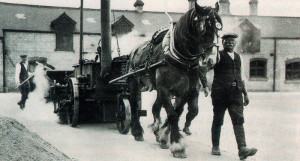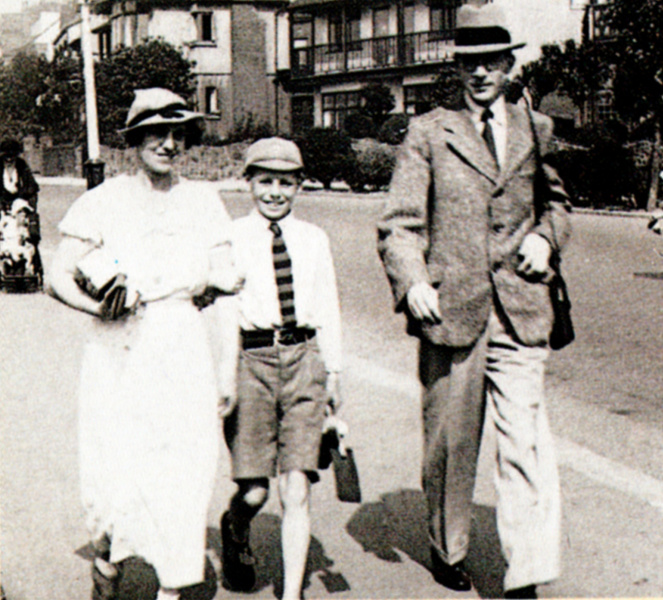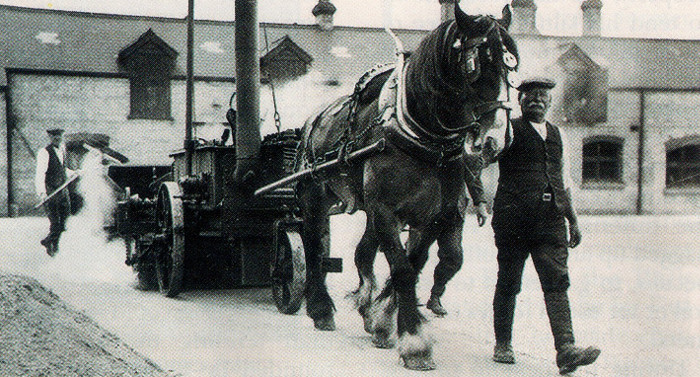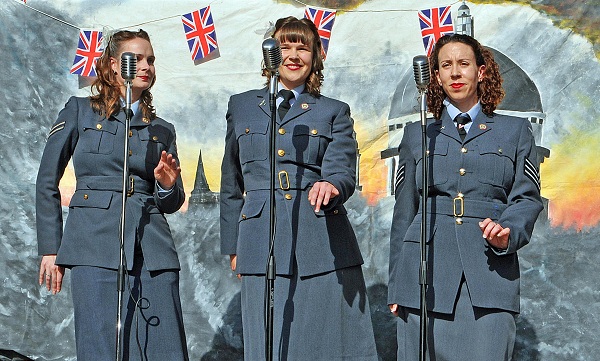
When materials were still being conveyed to sites throughout the Cambridge Borough in the mid-Thirties by horse-drawn carts from the Corporation store yard, I was the weighbridge clerk who booked them out.
After the carts had been loaded with the required items, the horse would draw the cart on to the Avery weighbridge and I would enter the reading from the dial into the ledger and on to the driver’s worksheet.
The horse itself did not stand on the weighbridge – it moved forward until it heard the cart wheels clatter on the grooved metal surface before stopping. The horse then stood motionless until the driver flicked the reins. The casual but professional way that it was done always fascinated me.
Each two-wheeled cart was numbered and the unladen weight was stencilled on the side enabling me to enter the weight of the materials and their destination.
The drivers with their charges would be queueing to move off as soon as they could after 7 am. It was hectic at first but, after breakfast, things quietened down and I would be able to price each item and extend the cost, as the Highways Superintendent required a daily running total of the amount spent on each job. No calculators then!
The eight English Shire horses, of 17 hands, were slow but possessed great strength. They were beautifully cared for -coats shining, hooves and hair trimmed and brasses gleaming.
Drivers each worked with the same named horse and cart daily, thereby creating pride in the turnout of each vehicle, as well as the horse being familiar with his the voice and mannerisms. The horses normally covered about ten miles each day and were stabled in the store yard, with a smithy alongside.
Each Saturday when work finished at noon, all the horses came to my sliding window to be given a few sugar lumps. I had to make sure that my fingers were below the level of the window ledge. Horses have a heavy bite – I learned the hard way!
I worked from 7 am to 5 pm and from 7 to noon on a Saturday – for 25 shillings a week – with three quarters of an hour for breakfast and an hour for lunch, cycling home each time.
On my first day at work I was sent down to the stores for a ‘long weight’. The storeman told me to stand outside and, after about twenty minutes, he said I had my ‘long wait’. T’was ever thus for the new boys!
Office staff had to be proper-
ly dressed at all times in suits and ties. I only possessed one suit, so in summer I left the waistcoat off! On Saturday mornings, sports jackets and flannels were permitted – with a tie, of course.
The whole of one side of the store yard was occupied by workshops, for carpenters, painters, plumbers, bricklayers and masons. Gas brackets remained on the walls (electricity had been installed in 1930) and the carpenter still used his gas ring to heat the glue pot – he preferred it anyway.
Smoking was not allowed in the yard at all.
Each of the workmen carried a circular brass tag with his number stamped on it which he deposited in a slot at the timekeeper’s window on arrival. The tags fell into a tin which was emptied at 7.08 a.m. The latecomers were deducted pay accordingly – a man arriving between 7.09 and 7.15 would
lose a quarter of an hour. The tags hung on a board with numbered hooks – so that the timekeeper could see at a glance who was absent – until reclaimed by the men at the end of the working day. A clock with a large dial, its accuracy checked daily, was located by the timekeeper’s desk and clearly visible to the men outside.
I was a keen photographer and always carried a camera in my bicycle saddlebag. On the day that the yard was resurfaced, I was able to record what was then routine but it now of particular interest.
The tar was heated by a coke fire in a mobile boiler and the vehicle drawn back and forth across the Yard by a led horse. The awkward areas and the join were done by hand, the boiling tar being drained into an old watering can. The granite chippings were spread by shovel from the back of a lorry and the whole surface consolidated by an Aveling and Porter 8 ton steamroller.
The eight horses were retired one by one and replaced by two 30 cwt. Ford lorries – end tippers, operated manually by a handle attached to worm gearing behind the driver’s cab.
While the lorries, although permanently limited to 30 mph, were obviously more efficient than the horses and carts, it was not the same anymore – the magic had gone!
Dennis Strange








